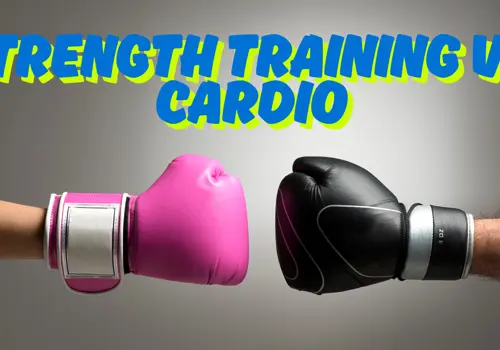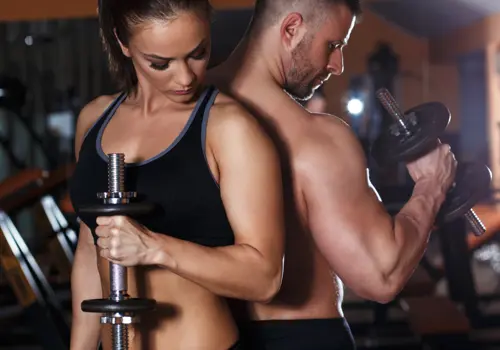Exercises/Workouts • Jan 29, 2025
10 of the Best Kettlebell Workouts at Home
As more people embrace the convenience of working out from home, kettlebells have become the ultimate fitness tool. They’re compact, versatile, and offer a powerful way to combine strength training and cardiovascular fitness—all without taking up much space.
In this guide, we’ll explore 10 of the best kettlebell exercises that can be performed at home, offering something for everyone. From beginners mastering the basics to seasoned pros seeking advanced moves, these exercises will help you build muscle, improve endurance, and stay consistent—all from the comfort of your living room.
Why Choose Kettlebell Workouts at Home?
Kettlebells are more than just a heavy lump with a handle. According to research, they are a dynamic piece of equipment that can completely transform your fitness regimen, increasing aerobic capacity and core strength. Here’s why they’ve become a staple for at-home workouts with kettlebells.
Kettlebells are incredibly versatile. With just one kettlebell, you can engage in strength training, full-body workouts, cardio, and functional fitness all in one routine. They’re perfect for small spaces, like apartments or home gyms, and the handle design allows for unique movements like swings, cleans, and snatches that aren’t possible with dumbbells. Whether you’re aiming for muscle-building strength exercises or cardiovascular fitness, kettlebells offer a comprehensive approach to fitness. Additionally
Experts agree that incorporating kettlebell moves into your workout routine also enables you to target multiple muscle groups simultaneously. This leads to a more efficient, time-saving workout session that delivers maximum results.
Getting Started: Essential Tips for At-Home Kettlebell Workouts
Before you dive into your kettlebell workout, there are a few important considerations to ensure you maximize the benefits and stay safe.
Choosing the Right Kettlebell Weight: As with any weight training, it’s essential to choose the correct kettlebell weight for your fitness level. Beginners should start with a lighter kettlebell, typically between 8-12 kg (15-25 lbs), while more experienced lifters can use heavier weights depending on the exercise.
Warm-Up: Warming up is essential before beginning any workout to prepare your muscles and joints for the movements ahead. Try 5-10 minutes of dynamic stretches or light cardio (like jumping jacks or bodyweight squats) to get your blood flowing and prevent injuries.
Focus on Form: Many kettlebell exercises involve explosive, dynamic movements, so proper form is crucial. Engage your core throughout each exercise, keep your back neutral, and avoid rounding your spine. If you’re unsure, consider checking out virtual coaching from Svetness to get personalized tips.
Progressive Overload: As you get stronger, aim to gradually increase the weight or intensity of your workouts. Progressive overload—whether through adding more weight, increasing the number of reps, or performing more rounds—ensures that your muscles keep adapting and growing stronger.
Got your gear and your space ready? Let’s get to the workouts.
The 10 Best Kettlebell Workouts at Home
Let's break down the top 10 kettlebell exercises that you can incorporate into your routine. These movements cover various aspects of fitness, from building strength to enhancing mobility and endurance.
Kettlebell Deadlift
The kettlebell deadlift primarily targets the glutes, hamstrings, and lower back. This movement helps develop a strong posterior chain and is great for improving hip hinge mechanics, which is key for many functional movements.
How to do it: Stand with your feet hip-width apart and place the kettlebell in front of you. Engage your core and slightly bend your knees. Push your hips back as you hinge at the waist, lowering your torso toward the kettlebell while maintaining a neutral spine. Grip the kettlebell with both hands, and push through your heels to stand up straight.
Svexpert tip: Focus on keeping your back straight and avoid letting your shoulders round forward.
Kettlebell Swing
The kettlebell swing is an explosive, full-body exercise that engages the core, legs, and upper body. It improves cardiovascular fitness, boosts strength, and develops power through the hips.
How to do it: Place the kettlebell on the floor between your feet. Keep your feet shoulder width apart. Hinge at your hips, grab the kettlebell with both hands, and then swing the kettlebell back between your legs. Thrust your hips forward to propel the kettlebell up to chest height. Let the kettlebell swing back down and repeat.
Svexpert tip: Focus on using your hips and glutes to generate the swing rather than pulling with your arms.
Goblet Squat
The kettlebell goblet squat primarily targets the quads, glutes, and hamstrings. It’s an excellent exercise for building strength and improving lower-body mobility while also engaging the core for stabilization.
How to do it: To do a goblet squat, hold the kettlebell by its horns at chest height, with elbows pointing downward. Stand with your feet slightly wider than shoulder-width apart. Squat down as low as you can while keeping your chest upright and your knees tracking over your toes. Push through your heels to return to the standing position.
Svexpert tip: Keep your chest upright and ensure your knees slightly bent do not pass beyond your toes.
Turkish Get-Up
The Turkish get-up is a complex, full-body movement that enhances core strength, improves shoulder stability, and increases mobility. It’s also excellent for building balance and coordination.
How to do it: Start by lying on your back with the kettlebell in one hand, extended overhead. Bend the knee of the leg on the same side as the kettlebell while keeping the opposite leg straight. Press your foot into the ground and use your arm to push yourself up onto your elbow, then your hand. Transition into a standing position while keeping the kettlebell overhead. Reverse the motion to return to the floor.
Svexpert tip: Focus on keeping the kettlebell directly above your shoulder and avoid letting it wobble during the movement.
Overhead Press
This exercise strengthens the shoulders, arms, and upper back, while also engaging the core for stabilization. The overhead press is a key movement for upper-body strength.
How to do it: Hold the kettlebell at shoulder height, with your palm facing inward. Press the kettlebell directly overhead, fully extending your arm while keeping your core tight and back straight. Slowly lower the kettlebell back to shoulder height and repeat.
Svexpert tip: Avoid arching your back during the press—engage your core to maintain a neutral spine.
Single-Arm Row
If you’re missing gym machines, this is a great substitute. The single-arm row targets the upper back, lats, and biceps. It’s an excellent move for building pulling strength and improving posture.
How to do it: Place one knee and hand on a bench or sturdy surface, with your back flat. Hold the kettlebell in your free hand, then pull the kettlebell toward your ribcage, squeezing your shoulder blade as you row. Lower the kettlebell back to the starting position and repeat.
Svexpert tip: Keep your chest lifted and avoid rounding your back to ensure proper form.
Russian Twists
Core work is essential, and this twist adds some serious challenge. Russian twists are a fantastic core exercise that targets the obliques, abs, and lower back. This exercise also helps with rotational strength and stability.
How to do it: Sit on the floor with your knees bent and feet slightly off the ground. Hold the kettlebell with both hands in front of you and rotate your torso from side to side, tapping the kettlebell on the floor beside you each time.
Svexpert tip: Keep your core tight and make sure not to lean too far back or round your back.
Lunge Pass-Through
This exercise improves coordination, leg strength, and core stability. By incorporating movement across multiple planes, it targets the quads, hamstrings, and glutes, while engaging the core to stabilize the torso during the pass.
How to do it: Start by holding a kettlebell handle in one hand at your side. Step forward into a lunge position with your front leg bent at a 90-degree angle and your back knee hovering just above the ground. Pass the kettlebell under your front leg to your opposite hand. Stand back up to the starting position and repeat the movement on the other leg, alternating sides.
Svexpert tip: Keep your chest upright and your core tight to prevent wobbling as you pass the kettlebell. Ensure your front knee stays aligned with your toes to avoid strain on the joint.
Kettlebell Clean and Press
The clean and press is a full-body exercise that builds strength, power, and endurance. The clean engages the posterior chain (hamstrings, glutes, and lower back) while the press targets the shoulders, triceps, and core.
How to do it: Start with the kettlebell on the floor between your feet. Hinge at the hips to grab the kettlebell handle with one hand. Perform a clean by pulling the kettlebell to shoulder height in one fluid motion, keeping it close to your body. Once the kettlebell reaches shoulder height, immediately press it overhead until your arm is fully extended. Lower the kettlebell back to the starting position and repeat.
Svexpert tip: Keep the kettlebell close to your body during the clean and avoid excessive swinging. Engage your shoulder blades to maintain control during the overhead press.
Windmill Stretch
The windmill stretch is a powerful combination of mobility and strength. It stretches the hamstrings, obliques, and lower back while strengthening the shoulders, core, and stabilizing muscles in the hips. It’s also great for improving flexibility and balance.
How to do it: Hold the kettlebell in one hand overhead with your arm fully extended. Stand with your feet shoulder-width apart and your toes turned slightly outward. Keeping your arm straight and your eyes on the kettlebell, hinge at your hips and slowly lower your free hand toward the floor. Maintain a straight spine throughout the movement, and return to standing.
Svexpert tip: Move slowly and with control, focusing on keeping the kettlebell straight above you and your core engaged to prevent wobbling.
How to Incorporate Dumbbells and Kettlebells into Your Routine
Combining dumbbells and kettlebells is a smart way to add variety and maximize your workouts. Kettlebells excel at dynamic, explosive movements like swings and cleans, while dumbbells are ideal for isolation exercises and controlled strength training. Together, they target functional strength and muscle building.
For instance, pair kettlebell swings with dumbbell rows to balance power and precision. Or alternate goblet squats with dumbbell shoulder presses for a full-body workout that hits both the lower and upper body. This approach prevents plateaus and ensures a well-rounded program.
By mixing these tools, you’ll improve cardiovascular fitness, core stability, and muscle endurance, creating a routine that’s both effective and engaging.
Building a Weekly At-Home Kettlebell Routine
The Cureus Journal of Medical Science found that kettlebell training improved athletic performance in athletes. And by creating a structured custom workout plan you can tap into the performance power and maximize the benefits of kettlebell training while maintaining consistency. This routine is designed to balance strength, cardio, core stability, and mobility, allowing you to target all major muscle groups effectively.
Day 1: Full-Body Strength
The goal on Day 1 is to build foundational strength by focusing on compound movements that work multiple muscle groups simultaneously. Exercises like kettlebell deadlifts, goblet squats, and overhead presses are excellent for targeting both the upper and lower body.
Kettlebell Exercises:
1. Kettlebell Deadlift – 4 sets of 12 reps
2. Goblet Squat – 3 sets of 10 reps
3. Kettlebell Overhead Press – 3 sets of 8 reps per arm
This day prioritizes progressive overload, helping you increase your strength and power. These compound exercises are excellent for developing a strong base for more advanced movements later in the week. Use kettlebell with a lighter weight if needed to perfect your form, especially for beginners.
Day 2: Cardio and Core
Day 2 focuses on elevating your heart rate while targeting your core muscles for stability and endurance. This is a high-energy session that incorporates kettlebell swings, Russian twists, and lunge pass-throughs to challenge your cardiovascular fitness and core strength.
Kettlebell Exercises:
1. Kettlebell Swing – 5 sets of 20 reps
2. Russian Twists – 3 sets of 30 seconds
3. Lunge Pass-Through – 4 sets of 12 reps per leg
This workout combines strength and cardio, making it a great way to burn calories while toning your abdominals and improving endurance. Keep your core tight during swings to avoid overextending your lower back.
Day 3: Active Recovery or Yoga
This is your chance to prioritize recovery and focus on mobility and flexibility. While it’s tempting to skip rest days, they are crucial for muscle repair and long-term progress. Use this day to engage in light stretching, foam rolling, or a gentle yoga session.
Recovery helps prevent overtraining and allows your body to rebuild stronger. Activities like yoga can also improve joint mobility and balance, which are essential for safe kettlebell training. Spend extra time stretching areas that feel tight, such as your hamstrings, shoulders, or hips.
Day 4: Power Moves
Day 4 emphasizes explosive movements to build power, coordination, and total-body strength. Exercises like the Turkish get-up and kettlebell clean and press are excellent for improving functional fitness and testing your ability to move fluidly with weight.
Kettlebell Exercises:
1. Turkish Get-Up – 3 sets of 5 reps per side
2. Kettlebell Clean and Press – 4 sets of 8 reps per side
3. Windmill Stretch – 3 sets of 10 reps per side
Power-based exercises help activate fast-twitch muscle fibers, which are key for building explosive strength and improving athletic performance. Move slowly and with control during the Turkish get-up—it’s a technical movement that requires precision.
Day 5: Lower Body Focus
This day is dedicated to strengthening your lower body through exercises that target the quads, glutes, and hamstrings. Adding single-leg movements, like lunges, ensures you’re also improving balance and symmetry between both sides of your body.
Kettlebell Exercises:
1. Goblet Squat – 3 sets of 12 reps
2. Reverse Lunge – 4 sets of 10 reps per leg
3. Single-Arm Row (with focus on engaging glutes for stabilization) – 3 sets of 10 reps per side
Strengthening your lower body not only enhances your ability to lift heavier weights but also improves mobility and functional strength for daily activities like walking or climbing stairs. During lunges, keep your front leg stable, with your knee aligned over your ankle.
Day 6: Cardio Finisher
The goal on Day 6 is to push your endurance to the limit with a high-intensity interval training (HIIT) approach. You’ll alternate between bursts of high effort and brief rest periods to maximize calorie burn and improve stamina.
Kettlebell Exercises:
1. Kettlebell Swing – 10 rounds of 30 seconds on, 15 seconds off
2. Lunge Pass-Through – 4 sets of 12 reps per leg
3. Russian Twists – 3 sets of 30 seconds
HIIT training is one of the most efficient ways to improve cardiovascular fitness and torch calories. Combining it with kettlebell training adds a strength element, making it even more effective. Focus on maintaining proper form during high-intensity sets to prevent injury.
Day 7: Rest or Light Stretching
The final day of the week is all about recovery. Take this day off entirely or engage in gentle movement to keep your muscles active without overexerting them. A well-rested body performs better, and regular recovery reduces the risk of burnout or injury. Stretching can also help you feel more limber and reduce soreness. Use a foam roller or massage ball to work out tight areas, especially in the shoulders, glutes, or hamstrings.
Try These Kettlebell Exercises at Home
Kettlebell workouts at home are an excellent way to combine strength training, cardiovascular fitness, and functional movement into one efficient routine. Whether you’re a beginner or an experienced lifter, kettlebells allow you to tailor your workouts to your goals and fitness level.
By following a structured weekly routine, focusing on proper technique, and gradually increasing the intensity, you can achieve impressive results without ever leaving your home. Incorporate these exercises into your regimen, stay consistent, and watch your strength, endurance, and confidence soar.
Start with the exercises that match your level, and build from there. And if you’re ready to take things up a notch, get in touch with Svetness, who have expert personal trainers to guide you through every step of your fitness journey.
Frequently Asked Questions
What is a good kettlebell workout for beginners?
A beginner-friendly kettlebell workout typically includes simple exercises like the kettlebell swing, goblet squat, and reverse lunge. Using a single kettlebell, you can create an effective full-body exercise regimen to build strength and endurance.
How can I incorporate a reverse lunge into my kettlebell workout?
To add reverse lunges to your body kettlebell workout, hold a single kettlebell in one hand or in a front rack position. Step back into a lunge while keeping your core engaged, alternating legs to target lower body strength and balance.
How often should I do kettlebell workouts at home?
For best results, aim for 3-5 kettlebell workouts per week, incorporating rest or active recovery days to allow your muscles to recover and prevent overtraining.
What weight of kettlebell should I start with?
Beginners should start with a lighter kettlebell—typically 8-12 kg (15-25 lbs)—to master form and technique before progressing to heavier weights as strength improves.




